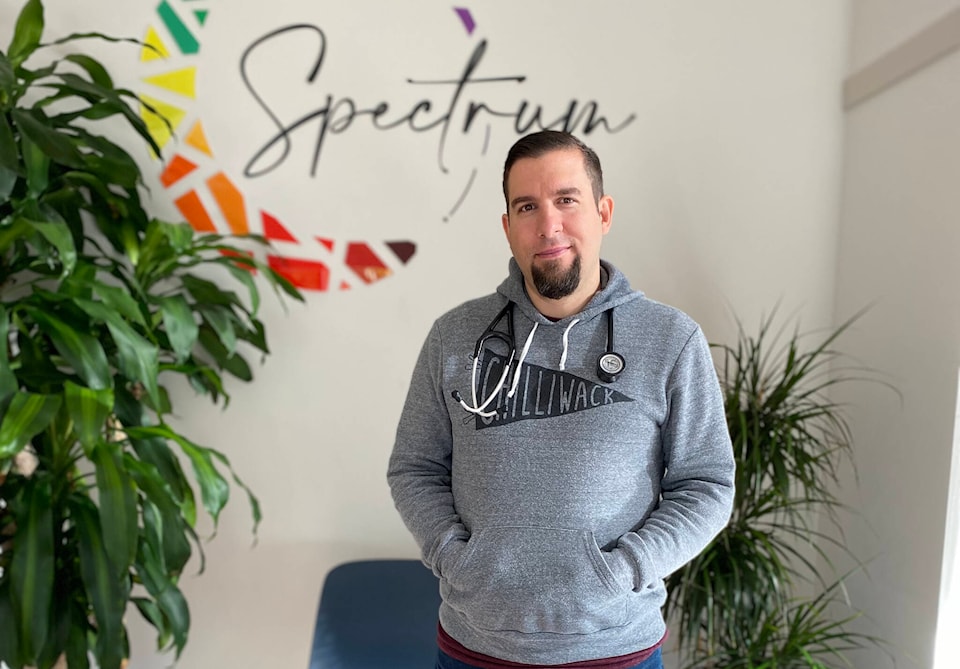Darren Joneson loves life as a family doctor.
Joneson has been practising medicine in Chilliwack since 2015 and opened Spectrum Medical and Phototherapy in 2020. There is variety to his days, where no two are ever the same. He enjoys the people he meets and the relationships he forms, and he enjoys having a job where he can make a tangible difference.
But there aren’t enough Darren Jonesons out there.
B.C. is experiencing a severe shortage of family doctors.
“In terms of the eastern Fraser Valley and Chilliwack, we’ve got about 20,000 unattached patients,” he said.
As great as Joneson believes his job is, he understands the reasons behind the shortage, and he actually takes issue with the descriptor ‘family doctor shortage.’
“There are actually 6,000 to 6,500 family doctors in B.C., but from that number only 3,000 have community practices where they accept patients,” he said.
The main issue, he believes, is the ‘fee-for-service’ model used by the provincial government, which pays doctors by the patient and allows for just one issue per visit.
He said there are a few doctors who will see 50 patients in three hours.
“I’m not exaggerating that number, and that works out to about three minutes per patient,” he said. “Those doctors make more money than doctors who see 25 to 30 patients in a day, and are trying to provide the best care they can with the time they’re given.”
The result of the ‘cram as many patients into the day as possible’ approach is burnout for the doctors who do it, and frustration for the doctors who don’t.
Both eventually lead to looking for an alternative.
Joneson said the 3,000 or so family doctors without community practices have chosen to work in addiction clinics, palliative care, hospitals and other places. Those are often health authority-based and come with little to no overhead. Those doctors get an hourly wage or bill for service and don’t have to pay for staff, space, supplies and all the other things a doctor with a community practice does.
He added that he does a lot of unpaid after-hours work, and said the administrative side of family medicine isn’t appealing to a lot of people.
“If you could do the job you’re doing now, but you’ll be paid more and have a better quality of life, who’s not going to take that option?” he said. “Part of it is we need to make community family medicine desirable. Clearly the system right now is sending people in a different direction.”
And that is having a negative impact on patient care.
Joneson is on the front line of diagnosis, and his patients will more often than not have issues identified early because there is a relationship/history between doctor and patient.
“I had a patient in for a physical, found something, investigated and identified it as cancer,” he recalled. “We were able to find it early and do something about it.
“I don’t have to go through my patients’ entire life story because I’m familiar with them. If they come in and they’ve lost 50 pounds since the last time I saw them I can ask them, ‘Are you trying to lose weight?’ And if the answer’s no, it’s a big red flag we need to look into.”
Those without family doctors who rely on walk-in clinics (Joneson calls it episodic care) are at risk of having things missed. That can be catastrophic for their health, and from a more callous dollars-and-cents point of view, it’s costlier for the health-care system.
“It’s far more expensive to treat cancer when it’s caught late,” Joneson said. “People need more treatments, more tests, and more time in the hospital and all of this costs money. A person going to ER costs the system about $1,000. An average family doctor’s visit is currently incredibly underpaid at about $30, and if you can prevent just one person from going to ER you’re saving the system a lot of money.”
